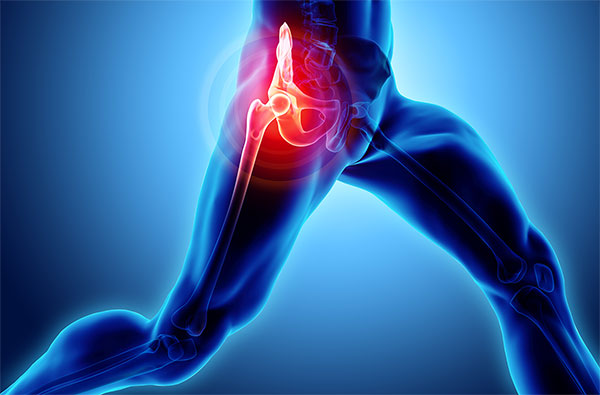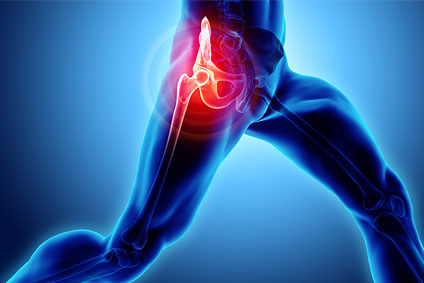
Mayo Clinic Orthopedics and Sports Medicine in Minneapolis provides what Kelechi Okoroha, M.D., an orthopedic surgeon and sports medicine specialist, calls an elevated hip experience. Among other conditions, it offers medical and surgical treatment for hip impingement — which occurs when the hip joint’s ball and socket do not articulate properly — and cause secondary damage.
In addition to his Mayo Clinic practice, Dr. Okoroha is a team physician for the Minnesota Timberwolves and the Minnesota Lynx. His research background focuses on injury management for professional and nonprofessional athletes, and he has authored over 150 orthopedic publications.
With hip impingement, an interest area for Dr. Okoroha, the misshapen ball cannot fit properly into the socket. In other patients, the socket extends too far, covering the surplus ball surface, or both issues may be present simultaneously.
“Hip impingement is like trying to fit a square peg into a round hole due to the extra bone that’s developed around the ball or socket,” he says.
Common symptoms notable in patients with hip impingement include:
- Extremely stiff hip, especially with flexion and internal rotation.
- Limited hip range of motion.
- Groin pain, or pain during lengthy sitting or deep squatting.
- Loss of function.
- Gait abnormalities.
The impingement restricts the patient’s movement and can prompt secondary damage in the articular cartilage or labral tears produced by compression. This tearing may be acute or chronic.
Demographics, risk factors and patient impact
Patients who experience hip impingement often are young, athletic individuals. In males, hip impingement often presents as excess bone on the ball, while in women, it often presents as excess bone on the socket. Dr. Okoroha notes this is due to various reasons such as pelvic anatomical differences between genders, though the exact etiology of these differences is unknown.
“Males who play high impact sports such as football and hockey are at increased risk for deformities on the ball of the hip (CAM deformity)” says Dr. Okoroha . In hockey, the goalie is at particularly high risk, spending a great deal of time crouched with hips flexed.”
When hip impingement arises for athletes, Dr. Okoroha indicates this condition can pose difficulties during the preseason or midseason.
“It can be killer for an athlete,” says Dr. Okoroha. “Many patients who have a goal of winning a championship or earning a scholarship may default to nonsurgical treatment just to continue competing and get through the season, then consider surgery postseason.”
Hip impingement is not directly genetic but can be influenced by genetic factors that shape the femoral neck or socket which predispose someone to FAI. Though not typically a direct sports injury, athletic activity may exacerbate hip impingement, especially in high-energy and high-contact sports, according to Dr. Okoroha. Landing from a jump in athletic activities such as basketball may trigger this injury, and dancers or gymnasts are prone to hip impingement or labral tears.
Reasons Dr. Okoroha calls Mayo Clinic’s hip impingement clinic elevated include:
Detailed patient education. Surgeons may use preoperative 3D CT scans with “heat maps” to demonstrate to patients the location of excess bone in the hip ball/socket area. These scans also illustrate their surgical planning customized to the patient’s anatomy. Patients may take home the personalized map of their hip with detailed explanations . This helps patients know exactly what needs to be corrected in their hip and what to expect from Mayo Clinic treatment.
Prompt scheduling and results. The Mayo Clinic hip impingement specialists prioritize timely clinic appointments, test results and surgical scheduling.
Advanced intraoperative resection. Surgeons employ image-based impingement resection models to ensure precise excess bone removal in the hip area. This helps patients avoid revision surgery as the most common reason for needing a second surgery is inadequate resection during the primary surgery. Most resections are minimally invasive.
Reduced postoperative pain and nerve complications. Mayo Clinic uses postless hip arthroscopy, a newer method for surgical joint access. This method avoid direct traction against a post in the groin during surgery, lessening the risk of postoperative hip pain and nerve palsy.
Controlled pain without opioid use. Many patients and their physicians are concerned about opioid use, with its potential issues including addiction and transition to street heroin use when an opioid prescription expires. Mayo Clinic hip impingement specialty clinic uses a novel nonopioid pain protocol its professionals created that provides opioid-equivalent pain control. Currently, Mayo clinic is leading a multi-center randomized, controlled clinical trial comparing the nonopioid protocol versus traditional opioids. The protocol has been found to provide equivalent pain control in 4 previous randomized controlled trials (meniscus, ACL, Rotator cuff and Shoulder labrum surgery).
Efficient recovery. Following hip impingement repair, Mayo Clinic orthopedic professionals fit patients with a brace and begin physical therapy immediately, continuing two to three times weekly. Within three weeks postsurgically, orthopedic staff help them wean from crutches. In three to six weeks, patients may resume daily activity without crutches; in six to nine months, patients may return to a high level of sports — if applicable — which > 90% of patients attain.
Minimized revision surgery risk. Mayo Clinic’s experience level with hip impingement and secondary injury helps reduce revision surgery risk. Dr. Okoroha considers optimal hip impingement repair during primary surgery crucial, as revision options are available but do not have the same success rate. He notes patients always have their best chance — >90% — of durable repair and incur less risk during primary surgery.
Hip impingement referral
As you seek treatment for a patient’s potential or diagnosed hip impingement and any secondary damage, Dr. Okoroha suggests:
Get help quickly. Hip impingement with labral tears or other secondary damage requires prompt treatment. Timely evaluation and diagnosis are critical to alleviate pain and further damage, which can arise if the condition is untreated for two to three years.
Expect surgical treatment. While conservative management may help with symptoms and range of motion, only surgery will change structural issues and pathology.
Refer to a specialist. Consider referring patients to a hip impingement specialist with advanced hip repair training and experience who has worked with thousands of patients with this condition. Mayo Clinic has a team with these qualifications who specialize in orthopedic surgery, sports medicine, and physical medicine and rehabilitation. These specialists collaborate to treat patients so they can resume sports or everyday activities.
Mayo Clinic surgeons are skilled in minimally invasive and open surgical techniques to repair hip impingement and secondary damage, such as:
- CAM/Pincer Decompression.
- Labrum repair and reconstruction.
- Capsule repair and reconstruction
- Cartilage repair and replacement
Insist on up-to-date technology. Along with highly trained and experienced hip impingement specialists, Mayo Clinic offers the latest imaging technology to help the surgeon pinpoint the patient’s source of hip pain.
You may refer patients by calling Mayo Clinic Orthopedics and Sports Medicine in Minneapolis or by calling Referring Physician Services at one of the Mayo Clinic locations in Arizona, Florida or Rochester, Minnesota.









